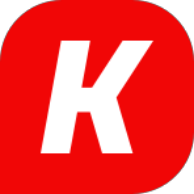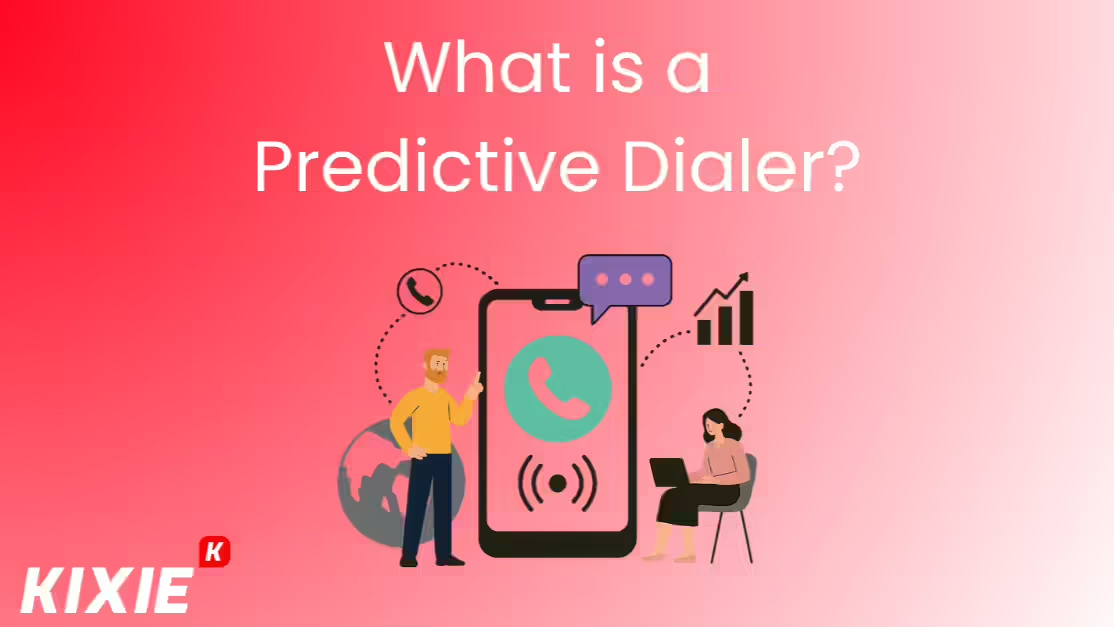Why Manual Dialing Is Dead
In the dynamic world of outbound sales and contact centers, efficiency is paramount. Every minute an agent spends not talking to a prospect is a minute of lost opportunity. The traditional approach of manual dialing exemplifies this inefficiency: sales agents waste significant time looking up numbers, dialing, listening to rings, reaching voicemails, and logging calls. This cycle of repetitive, low-value tasks can consume the vast majority of an agent's day, leaving only a fraction for what truly matters: having live conversations and closing deals.
This immense inefficiency is precisely the problem that predictive dialer technology was created to solve. A predictive dialer is a sophisticated, automated business calling system that revolutionizes outbound communication. Leveraging advanced algorithms and often artificial intelligence (AI), it automatically dials multiple numbers simultaneously from a predefined list, anticipating when agents will become available. This intelligent automation ensures that agents are connected only when a live human being answers the phone, enabling them to focus exclusively on engaging with customers, rather than waiting or dealing with unproductive call outcomes.
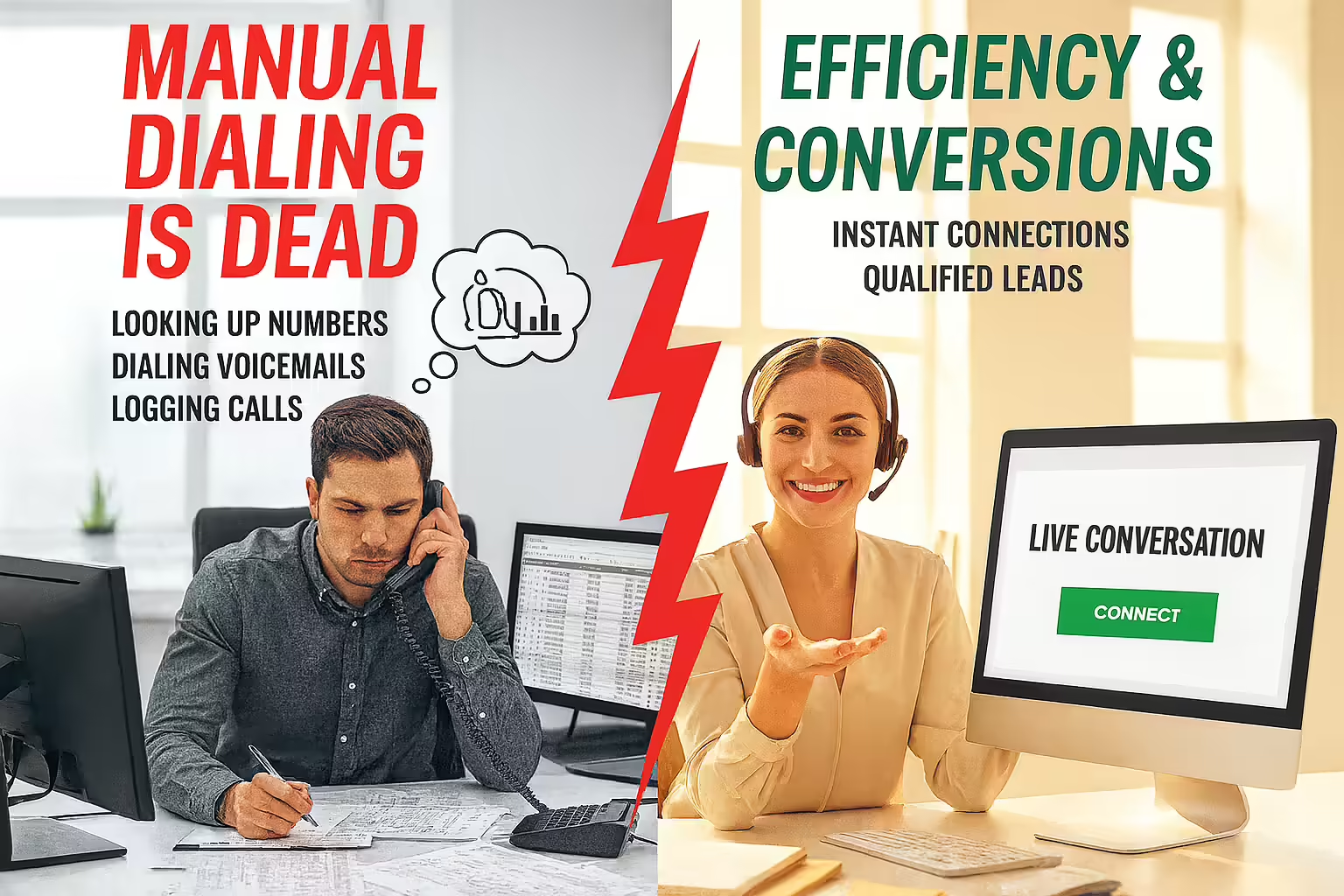
For businesses and call centers focused on maximizing outbound call volumes, a predictive dialer like the one offered by Kixie is an indispensable tool. It dramatically increases agent talk time and overall efficiency, allowing for strategic campaign management, ensuring compliance, and delivering valuable insights. The technology, which first gained prominence over 30 years ago in high-volume environments like banking and debt collection, has evolved from cumbersome on-premise hardware to flexible, scalable, and cost-effective cloud-based (SaaS) platforms. This evolution has democratized access to this powerful tool, making it an essential asset for modern businesses that rely on outbound calling for growth. The fundamental value proposition has shifted from mere task automation to a strategic restructuring of an agent's workday around their highest-value activity, driving revenue generation.
The "Magic" Behind the Dial: How Predictive Algorithms Work
The "predictive" component of the dialer is not magic, but rather a sophisticated and dynamic mathematical process designed for one purpose: to have a live call ready and waiting the very instant an agent finishes their previous conversation, thereby eliminating idle time. This is achieved through a core component known as the pacing algorithm, which acts as the brain of the entire operation.

The Pacing Algorithm in Action:
The pacing algorithm constantly analyzes a stream of real-time and historical data to make highly educated guesses about when to place the next batch of calls. It is a continuous, self-correcting feedback loop that adjusts its dialing aggression based on a multitude of variables:
- Agent Availability: The system knows precisely how many agents are currently on calls and how many are available for the next one.
- Average Handle Time (AHT): It tracks the average duration of each agent's calls, both historically and in real-time, to predict how long current conversations will last.
- Connection Rate (or Hit Rate): The algorithm calculates the statistical probability of a dialed number resulting in a live answer. This rate can fluctuate dramatically based on the quality of the list, the time of day, and the day of the week.
- Abandoned Call Rate: It monitors the percentage of calls that are answered by a person but dropped because no agent was free to take the call. This is a critical metric for both performance and legal compliance.
Based on this data, the algorithm determines the optimal concurrent call ratio—the number of lines to dial simultaneously for each available agent. For example, if the algorithm observes that the historical hit rate for a particular campaign is only 25% (meaning only one in four calls are answered by a live person), it might decide to dial four numbers at once for a single available agent. It predicts that three of those calls will likely result in a busy signal, no answer, or voicemail, while one will connect, ready to be passed to the agent just as they become free.
Step-by-Step Process of Predictive Dialing:
- Call List Preparation: A contact list of phone numbers is uploaded into the system. This often involves integrating the dialer with your Customer Relationship Management (CRM) system for efficient contact list management, including importing, filtering, and prioritizing leads.
- Simultaneous Dialing: Based on the predictions from the pacing algorithm, the system begins dialing multiple numbers concurrently, even before an agent is entirely free from their previous call.
- Call Screening (Filtering the Noise to Find the Signal): A crucial function that works in tandem with the pacing algorithm is call progress analysis or answering machine detection (AMD). As the system dials out, it actively "listens" to the line. It can instantly identify the electronic tones of a busy signal, the specific cadence of a voicemail greeting, or the silence of a disconnected number.
- Agent Connection: Once a live person answers, the system immediately routes the call to the next available agent. The contact's information typically "screen pops" up on the agent's screen as the call is routed, providing instant context.
- Continuous Optimization: The most advanced predictive dialers today are infused with artificial intelligence and machine learning. These systems go beyond static, rule-based calculations. They learn from every single call attempt, recognizing subtle patterns in agent activity and customer behavior.
The Business Case: Unpacking the Benefits of Predictive Dialing
The sophisticated technology behind predictive dialers translates directly into tangible, compelling, and often transformative business benefits. By re-engineering the outbound calling process around efficiency and live conversations, these platforms deliver a clear and rapid return on investment.

Hyper-Efficiency
By automating manual dialing and filtering out unproductive calls, agents spend maximum time engaged in selling. Agent idle time is virtually eliminated. A manual agent might connect with 4 prospects in an hour, while the same agent with a predictive dialer can connect with 16 or more.
300%+ BoostIncreased Call Volume
Massive increase in the sheer volume of calls and connections a team can handle. This allows businesses to work through lead lists faster, accelerate sales cycles, and ultimately generate more revenue.
Lower Cost Per ContactEnhanced Customer Experience
By reducing wait times and connecting customers to live agents faster and at optimal times, predictive dialers contribute to a superior customer experience with personalized interactions.
Better QualityData-Driven Insights
Powerful analytics and reporting dashboards track essential KPIs such as total calls made, connection rates, average call duration, and agent performance for informed strategic decisions.
Real-Time AnalyticsPredictive dialers are uniquely suited for high-volume outbound calling campaigns and managing large lead databases. They are particularly beneficial for mid-sized to large businesses and call centers with a significant number of agents (often recommended for 5-10 or more agents for optimal performance), as the predictive algorithm performs better with more data. They are ideal for:
- Sales and Telemarketing Firms: For large-scale campaigns where the primary objective is to contact as many leads as possible.
- Debt Collection Agencies: Automating outreach for bill payments and follow-ups.
- Market Research Firms: Rapid data collection through surveys.
- Political Campaigns and Non-Profit Fundraising: Voter outreach, polling, or donor engagement.
- Customer Service and Support Centers: Gathering customer feedback, sending payment reminders, or appointment confirmations.
- Healthcare Providers: Appointment scheduling, patient reminders, and medication updates.
- Financial Institutions: Bill payment reminders, fraud detection alerts, loan inquiries, and collections.
- Real Estate: Efficiently contacting potential buyers or renters about new property listings.
Choosing Your Weapon: Predictive vs. Power vs. Progressive Dialers
The term "autodialer" is often used as a catch-all, but in reality, it encompasses several distinct technologies, each designed for different strategic purposes. Understanding the nuances between predictive, power, progressive, and preview dialers is critical for selecting the right tool for your specific campaign goals, team structure, and sales philosophy.
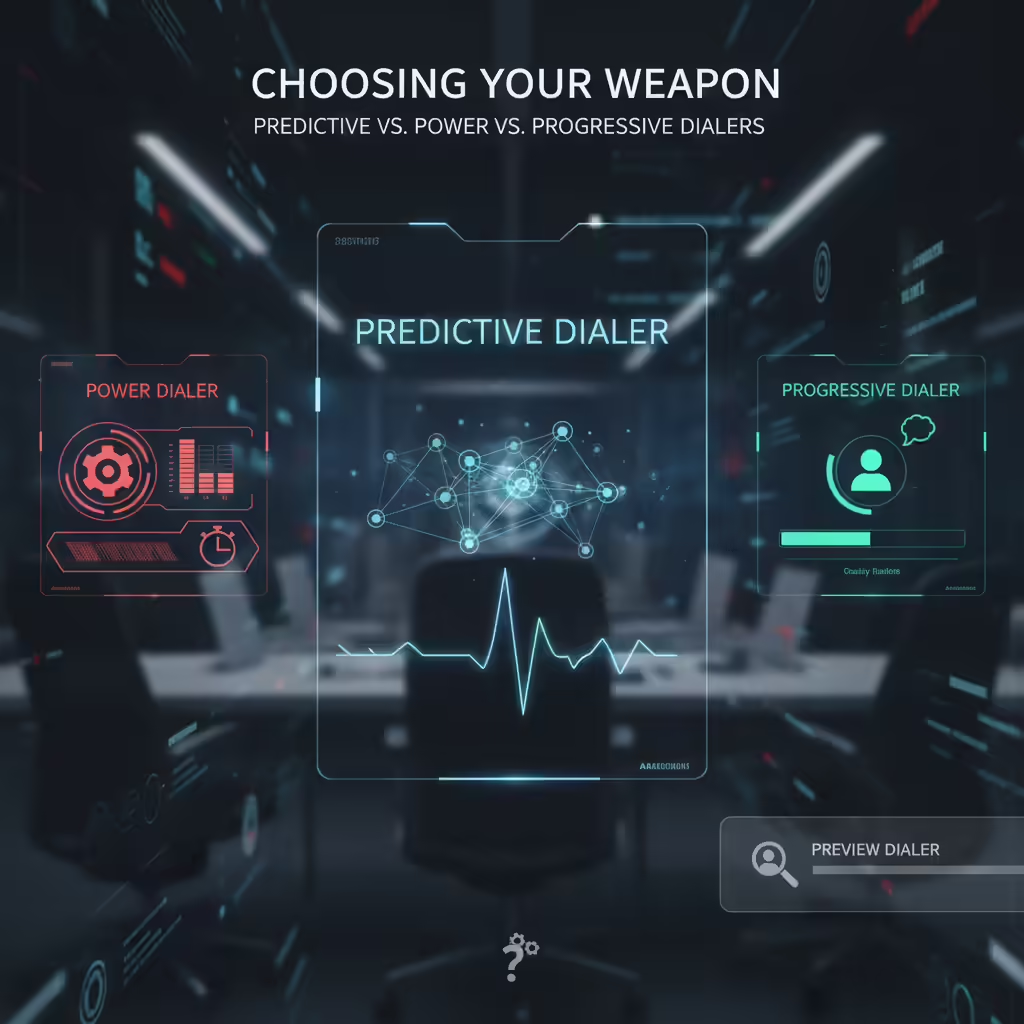
Predictive Dialer
Method: Dials multiple numbers per agent simultaneously, predicting agent availability.
Aggressive High VolumeBest For: High-volume, transactional campaigns (telemarketing, debt collection, large-scale surveys) where maximizing connections is paramount.
Power Dialer
Method: Automatically dials one phone number at a time for each available agent, immediately initiating the next dial.
Balanced Zero AbandonmentBest For: Inside sales teams who value high-quality, personalized interactions but still need to maintain a high call volume.
Progressive Dialer
Method: Dials one number at a time per agent only after an agent has explicitly indicated they are ready for the next call.
Agent-Controlled SafeBest For: Relationship-focused sales or customer service follow-ups where call quality is top priority.
Preview Dialer
Method: Presents the agent with contact information before a call is placed, allowing them to review details and then manually initiate the call.
Maximum Control PersonalizedBest For: Complex, high-value B2B sales, sensitive client matters, or scenarios requiring deep contact understanding.
Navigating the Rules: Predictive Dialers and TCPA Compliance
While predictive dialers are powerful tools for productivity, their use is strictly regulated. The single most important consideration for any business using this technology is legal compliance, primarily with the Telephone Consumer Protection Act (TCPA) in the US, but also with other international regulations like GDPR in Europe or guidelines from the Office of Communications (Ofcom) in the UK.
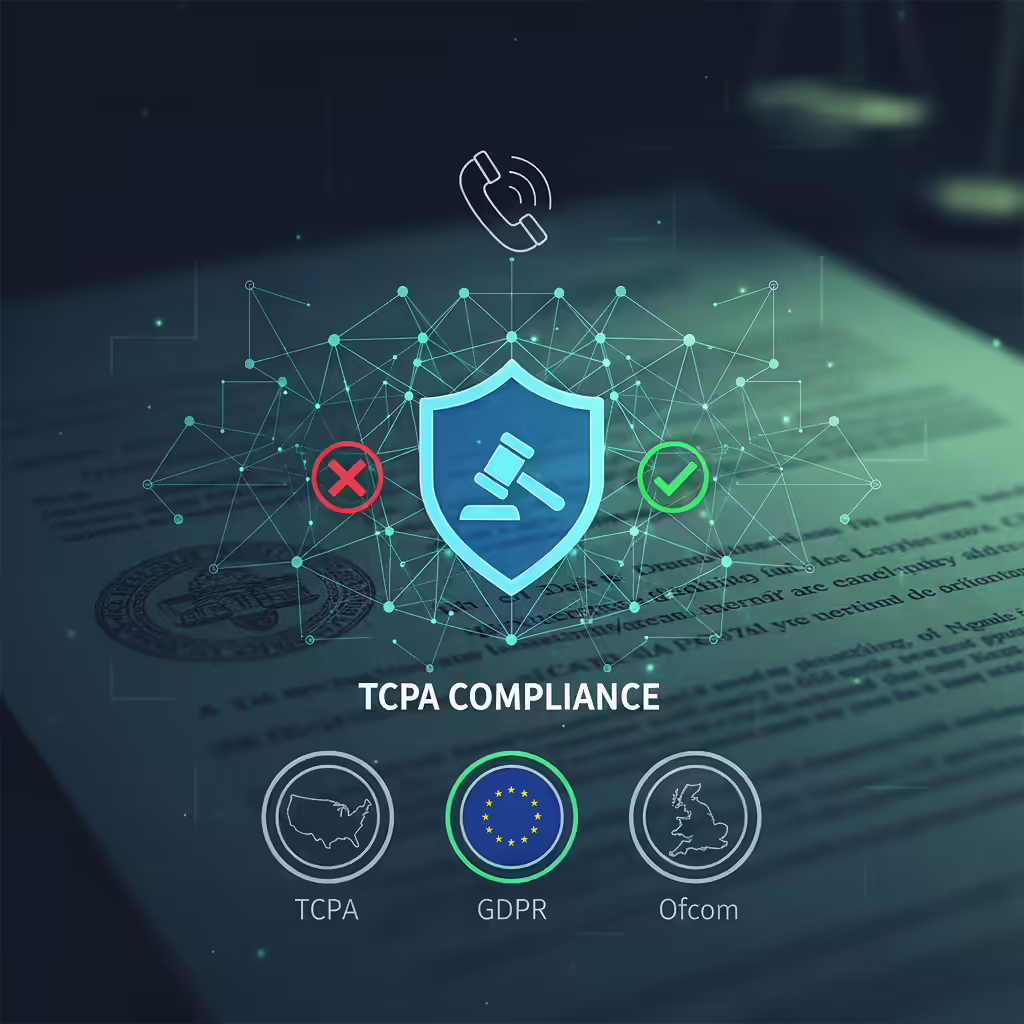
⚠️ Critical Compliance Requirements
In the United States, the Federal Communications Commission (FCC) has explicitly stated that predictive dialers fall under the TCPA's definition of an "Automatic Telephone Dialing System" (ATDS). Operating a predictive dialer in a compliant manner requires adherence to several key rules:
- Prior Express Written Consent (PEWC): For any telemarketing or advertising call made to a mobile phone using an ATDS, the business must have PEWC from the recipient. This requires a written agreement that clearly and conspicuously states that the consumer authorizes the seller to make telemarketing calls.
- Abandoned Call Rate: An abandoned call occurs when the dialer connects to a live person, but no agent is available to take the call within two seconds. The TCPA mandates that the abandoned call rate for any single telemarketing campaign must not exceed 3% over a 30-day period. Exceeding this threshold can result in substantial fines (up to $43,792 per incident).
- Do Not Call (DNC) Registry: Businesses must honor the National DNC Registry, scrubbing their call lists against it at least every 31 days. They are also required to maintain their own internal, company-specific DNC list.
- Calling Time Restrictions: Telemarketing calls are generally restricted to between 8:00 a.m. and 9:00 p.m. in the recipient's local time zone.
- Caller Identification: All calls must transmit accurate caller ID information, including the caller's name and a valid phone number that the consumer can call back.
Setting Up a Predictive Dialer Campaign
Setting up a campaign with a predictive dialer involves several key steps to ensure optimal performance and compliance, maximizing agent talk time and boosting productivity.
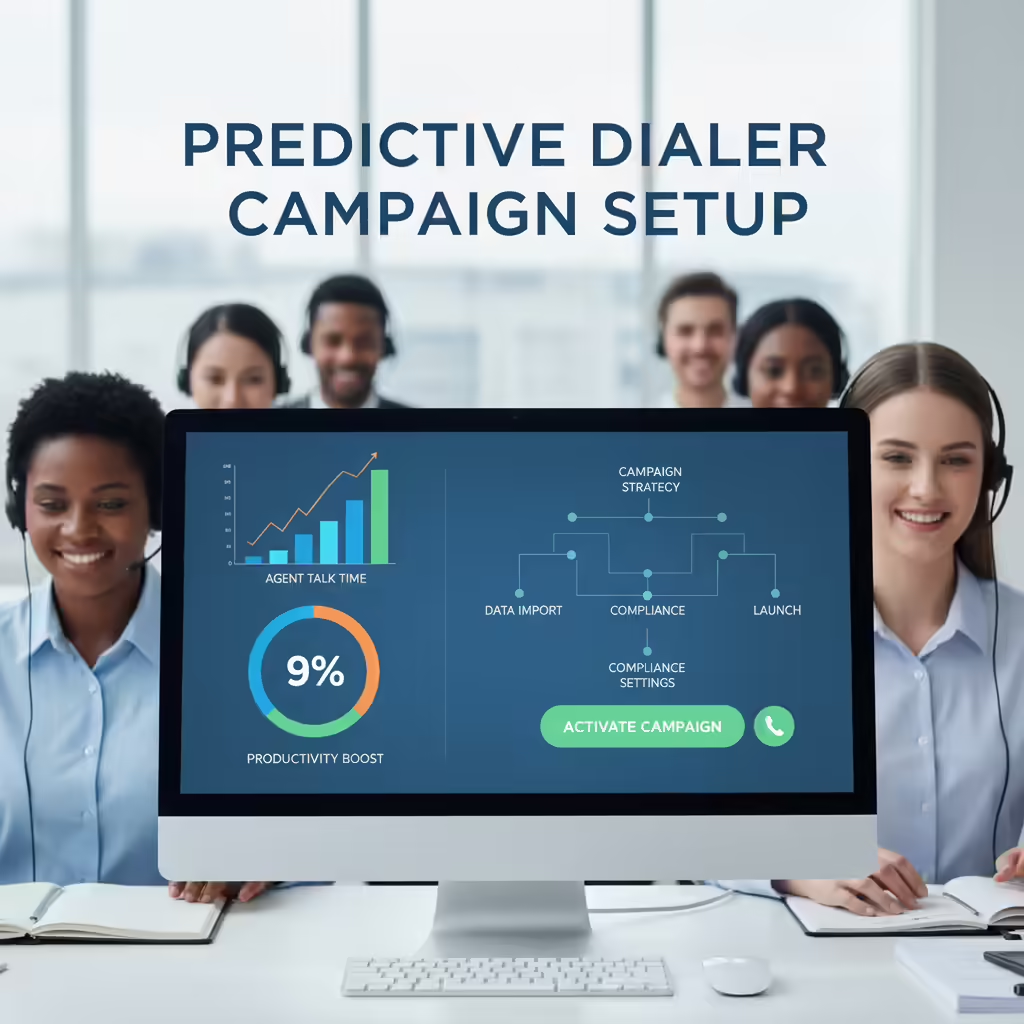
Campaign Setup Essentials
- Prepare Your Data and Contact Lists: Import your contacts or integrate the dialer with your CRM (e.g., HubSpot, Salesforce, Pipedrive). Clean your list to remove outdated/incorrect info and segment it according to campaign goals.
- Configure Campaign Settings: Define core parameters including naming, outbound caller ID, call scripts, agent assignment, dialing method and pacing, time zone awareness, after-call work time, call recording, answering machine detection, abandonment rate management, DNC compliance, and call result/disposition codes.
- Agent Training and Monitoring: Train agents on system use and expectations. Managers can monitor activities from a dashboard, oversee calls, perform live call coaching, control dialing speed, and access real-time campaign reports and analytics.
Drawbacks and Challenges of Predictive Dialing
While powerful for maximizing outbound calling efficiency, predictive dialers do come with certain drawbacks and challenges that businesses should consider. Understanding these limitations is crucial for effective and compliant use.
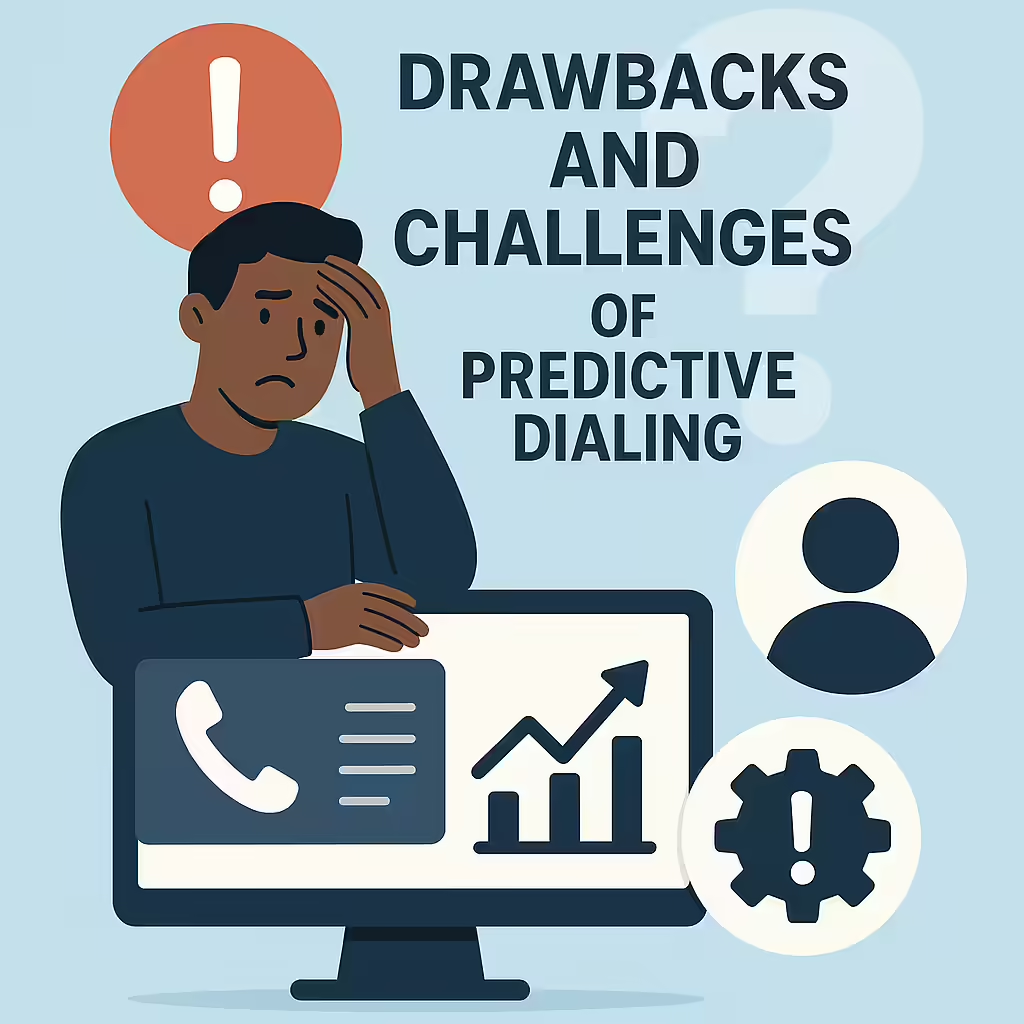
- "Telemarketer Delay" or "Dead Air": This brief, off-putting silence occurs after a contact answers but before a live agent connects. This can lead to increased hang-ups, number blocks, and calls being marked as abandoned.
- Risk of Abandoned Calls: This significant challenge is the potential for high call abandonment rates if the dialer is poorly configured or agent availability fluctuates.
- Compliance and Regulatory Scrutiny: Predictive dialers face stricter scrutiny due to their aggressive dialing. They require careful configuration for TCPA, DNC, and other laws.
- Limited Personalization and Lack of Context: Due to the fast pace, agents often have limited time to research or tailor their approach before connecting to a live call.
- Potential for Agent Anxiety and Burnout: The continuous, high-pressure environment of predictive dialing can lead to stress, anxiety, and potential burnout for call center agents.
- Technological Complexity and Cost: These dialers rely on sophisticated algorithms, making them complex to set up, calibrate, and maintain.
- Not Ideal for Small Teams: Predictive dialers generally perform better with large campaigns and larger teams (typically 5-10+ agents) because they require more data for accurate predictions.
The Kixie Evolution: More Than Just a Dialer
Understanding the fundamentals of predictive dialing is essential, but the true value in today's sales environment comes from platforms that have evolved far beyond simple call automation. Kixie is not just a predictive dialer; it is a comprehensive sales engagement platform designed to boost team performance by seamlessly integrating advanced calling and texting capabilities directly into a salesperson's core workflow.
At the heart of the platform is Kixie's multi-line Power Dialer. This feature combines the raw speed often associated with predictive dialing—with the ability to dial up to 10 lines simultaneously—with the control and zero-abandonment-rate safety of a power dialer. This hybrid approach allows teams to power through lists at an incredible pace, making upwards of 1,000 calls a day, without the compliance risks of traditional predictive systems.
Deep CRM Integration
Kixie's most significant differentiator is its deep, bi-directional CRM integration. While many dialers claim to "integrate" with CRMs, Kixie's implementation creates a truly unified workspace, offering native, out-of-the-box integrations with over 25 of the world's leading CRMs, including Salesforce, HubSpot, Zoho, HighLevel, and Pipedrive.
- Eliminating Manual Data Entry: Every call, text message, call outcome, note, and lifetime call recording is automatically logged to the correct contact, deal, and company record in the CRM.
- Enabling In-CRM Workflows: Agents can live and work within their CRM. Kixie's click-to-call extension makes any phone number on a webpage or in the CRM clickable.
- Automating Sales Cadences: The integration allows call outcomes in Kixie to trigger powerful automation workflows within the CRM.
The Unfair Advantage: Supercharge Your Pickup Rate with Kixie's ConnectionBoost
In the modern sales landscape, dialing efficiency is only half the battle. The single biggest challenge facing outbound teams today is not dialing numbers faster, but getting prospects to actually answer the phone. With the proliferation of spam calls, consumers are conditioned to ignore unknown numbers, and carrier-level spam filters often flag legitimate business calls.
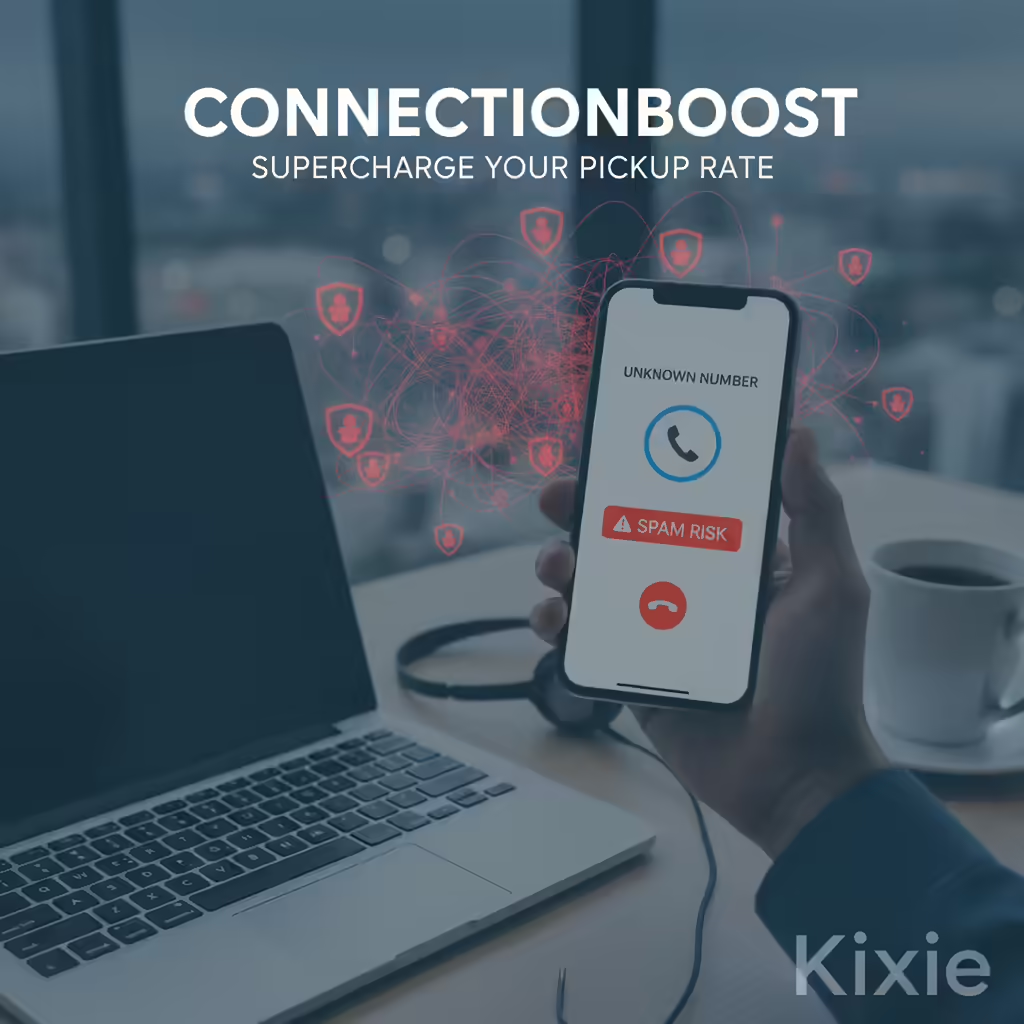
This is the problem Kixie's proprietary ConnectionBoost technology was built to solve. It is an AI-powered suite of features designed to tackle the effectiveness problem of connecting, not just the efficiency problem of dialing. On average, sales teams using ConnectionBoost connect with up to five times more leads, achieving this through a unique, three-pronged approach:
AI-Powered Local Presence
Automatically displays a local phone number on a prospect's caller ID that matches their area code. This makes the call seem more familiar and trustworthy, dramatically increasing pickup rates.
400-500% Higher ConnectionProgressive Caller ID
Dynamic rotation strategy that uses different local numbers for subsequent call attempts to the same prospect, keeping outreach fresh and harder to screen.
Smart RotationAI-Powered Spam Protection
Constantly monitors the performance of all numbers in Kixie's pool. If a number is flagged as spam, the system automatically replaces it with a clean, high-performing one.
50,000+ NumbersThe Proof is in the Performance: Real Results with Kixie
The theoretical benefits of an advanced sales engagement platform are compelling, but the true measure of its value lies in the concrete, quantifiable results it delivers for real businesses.
Fischer Homes
Leveraging Kixie's multi-line PowerDialer and automated workflows, their team placed 300% more outbound calls, connecting with a vastly larger pool of potential homebuyers.
3x Call VolumeSolar Power Pros
Using automated SMS appointment reminders through Pipedrive integration, their appointment no-show rate dropped by 50% (from 10% to 5%) in one month.
50% Fewer No-ShowsGOSO Technologies
After implementing ConnectionBoost with AI-Powered Local Presence, their cold call pickup rate skyrocketed from 1% to 10%.
10x Connection RateStop Dialing, Start Selling
The journey through the world of predictive dialers reveals a clear technological evolution. What began as a tool to solve the simple, mechanical problem of manual dialing has transformed into a sophisticated, AI-driven engine for sales acceleration. The goal is to move your team's focus away from the process of dialing and onto the purpose of selling.
Originally posted: https://www.linkedin.com/pulse/what-predictive-dialer-kixie-bo2ge/

